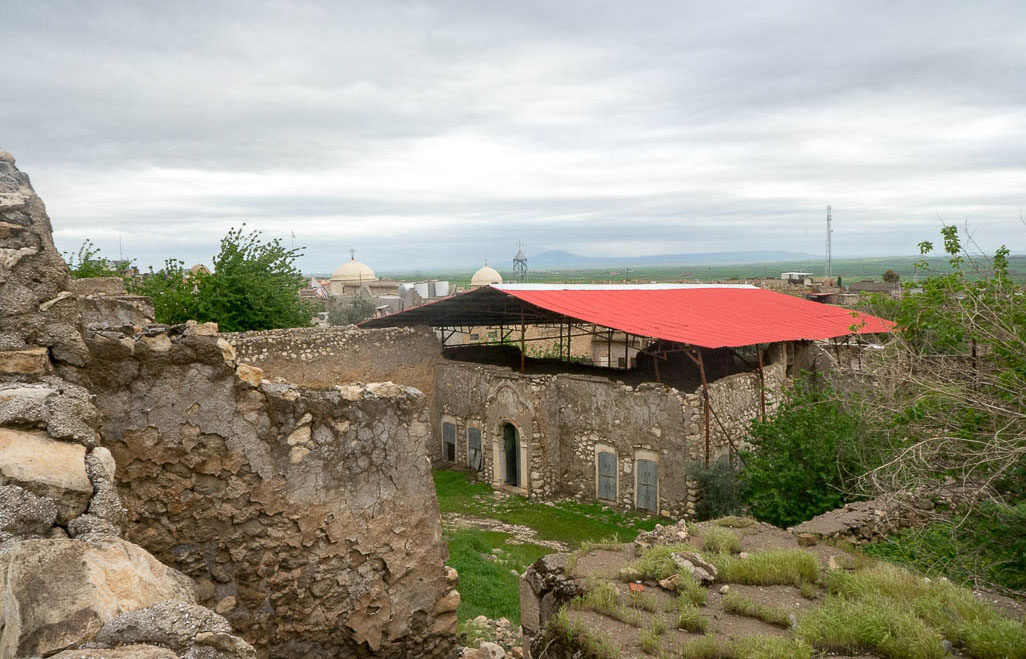
We had three prophets’ tombs in Iraq, but the tomb of Nahum was the most important one," recalled Maurice Bar-On (75), of his childhood in Kurdistan. "Jews from Turkey, Persia, Iraq, and from distant Baghdad, would come to it, at a time when there were no major roads in Iraq. But the Kurdish Jews would come in the greatest numbers – Jews from all over Kurdistan."
Bar-On's father was a caretaker of the ancient complex surrounding the tomb. This is the source of Bar-On’s excitement about the recent completion of renovations on the complex and synagogue alongside it, located in the town of Alqosh in the Kurdish autonomous region of northern Iraq.
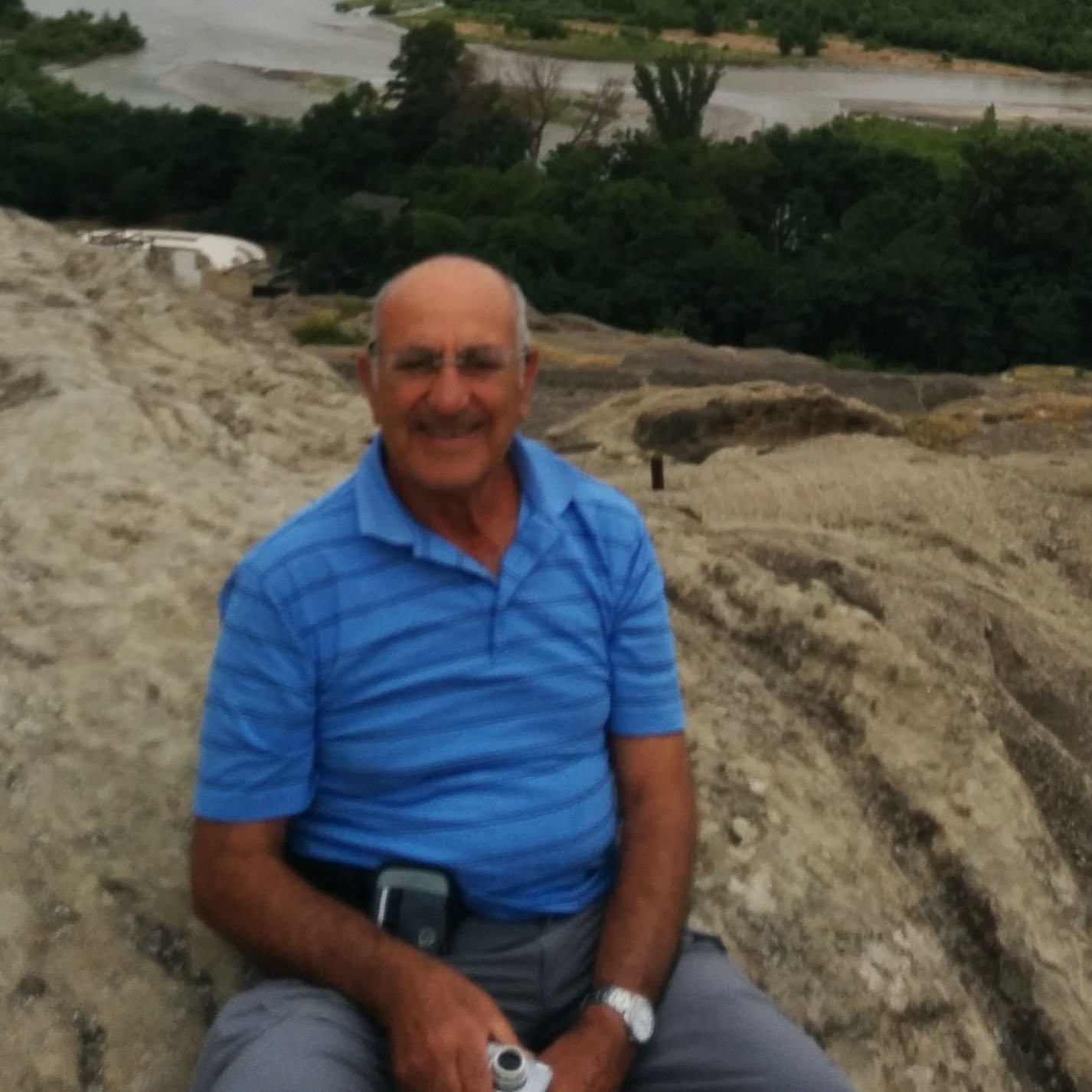
The compound, which is considered the most important religious site for Kurdish Jewry, began to deteriorate due to neglect, and managed to escape the hands of ISIS. The threat of the 900-year-old tomb’s ruin led to its renovation, and to the establishment of a Babylonian Jewish Center, the first of its kind in Kurdistan.
The planners and backers of the renovation included the U.S government, the Kurdish government, the Czech government and the Assyrian church, and had it not been for the pandemic, the restored complex would have already been inaugurated. According to Father Salar Kaju, an Assyrian priest who lives in Alqosh and is a member of the ARCH Expert Advisory Committee, plans are made to add a small hotel, a restaurant, and a museum of Kurdistan Jewry to the project.
To understand the international and religious interest in the fate of this Jewish site, it is important to understand the complex history of the region. Kurdistan is the geopolitical region where Kurdish people form the majority, and is made up of northern Iraq and parts of Turkey, Syria and Iran. Iraqi Kurdistan is a semi–autonomous region recognized by the Iraqi government, and includes non-Kurdish cultural groups, like the Assyrians, Christians claiming descendance from the ancient Assyrian empire.
Chapter 1: The Kurds
Some 2,600 years after Nahum's prophecy about the impending destruction of Assyria (modern-day Iraq) was documented, ISIS jihadists invaded the region in 2014. Riding in white Toyotas, they conquered sections of the plains of Nineveh and the city of Mosul, and committed a systematic genocide against the Yazidis and other minorities, including Assyrian Christians. In 2017, the area was retaken by the The U.S. military and the Peshmerga, the Kurdish forces, after bitter warfare.
“She is empty, and void, and waste: and the heart melteth, and the knees smite together,” Nahum the Alqoshite foretold of Nineveh’s downfall, in words that also accurately describe the disaster that befell the inhabitants of the 2014 Nineveh Valley.
All the women and children of the village of Alqosh fled, while the men set up a military force that managed to defend the town. During the same period, ISIS blew up the ancient tomb of the prophet Jonah, which was sacred to Jews and Muslims, and transformed the tomb of the prophet Ezekiel into a Shiite mosque. The tomb of Nahum the Alqoshite, located 50 kilometers north of Mosul, was miraculously spared from total destruction.
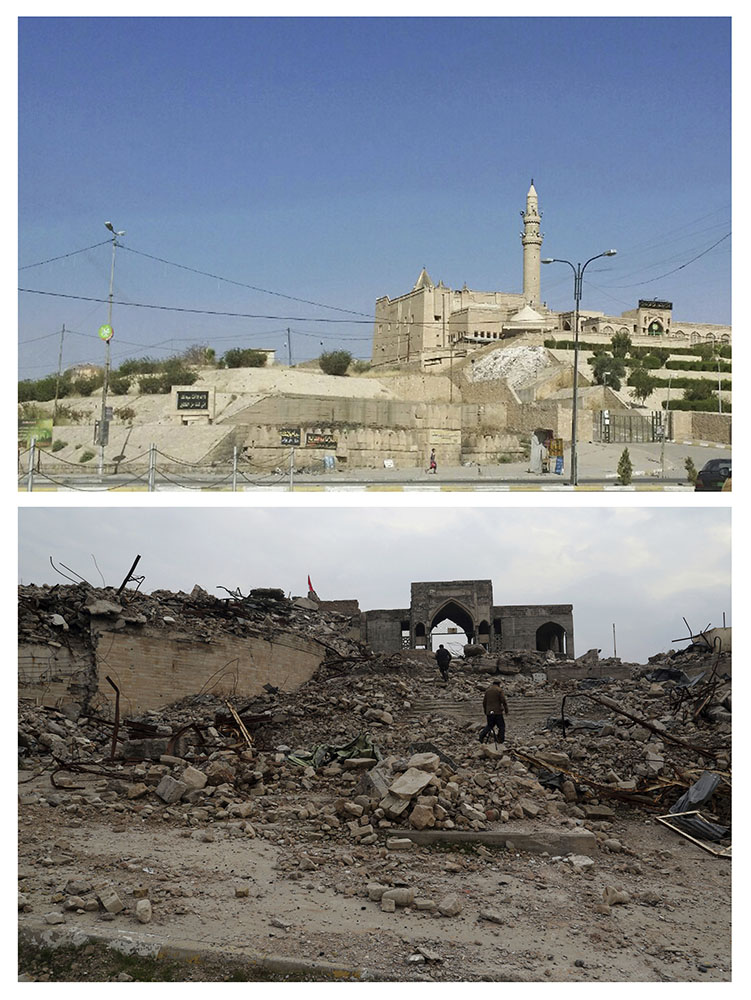
"This is a small light in all the great darkness surrounding it," said former Knesset member Ksenia Svetlova.
In the years following ISIS’s expulsion from this region of Iraq, there were many urgent needs to be dealt with in rebuilding. So what made the restoration of Nahum’s tomb a priority?
"The tomb is located near Alqosh and we thought its collapse would hurt the morale of the town's residents," explained Cheryl Benard, founder and president of the American nonprofit ARCH (Alliance for the Restoration of Cultural Heritage), which is responsible for renovating the tomb complex.
"They get up every morning and see how the tomb is deteriorating before their eyes and that nothing can be done. This tomb is a big part of the identity of the Assyrian residents. They are proud of it. They remember how Jews from all over the area would flock to it,” she continued. “Living in a place of pilgrimage gives meaning to life. The Shavuot holiday, when the Jews would flock en masse to the town, was one of the most significant event of the year for the Christian residents."
Benard explained that the President of Kurdistan, Nechirvan Barzani, took on the restoration of the site as a personal project, and sent his representatives to offer support. She attributes this to the Kurdish authorities’ understanding that the site is a symbol of interfaith solidarity and goodwill between minority peoples throughout the years.
Chapter 2: The Americans
"Our organization believes that restoring heritage sites is a great way to reconcile enemies after a conflict," Benard explained. “We spent some time in Iraq aiming to help women and refugees, bring people together and help them remember that their heritage is ancient and goes far beyond everyday troubles. Because communities love their roots and are proud of their past, renovating something that is close to their hearts empowers them."
She said when she was first exposed to the reality of the grave, she was shocked by its “catastrophic condition." Her team feared that the site was beyond salvaging. In consultations with Israeli engineers Yaakov Sheffer and Meir Ronen, who had worked on the restoration of the City of David in Jerusalem, they were advised to act immediately in order to save the tomb.
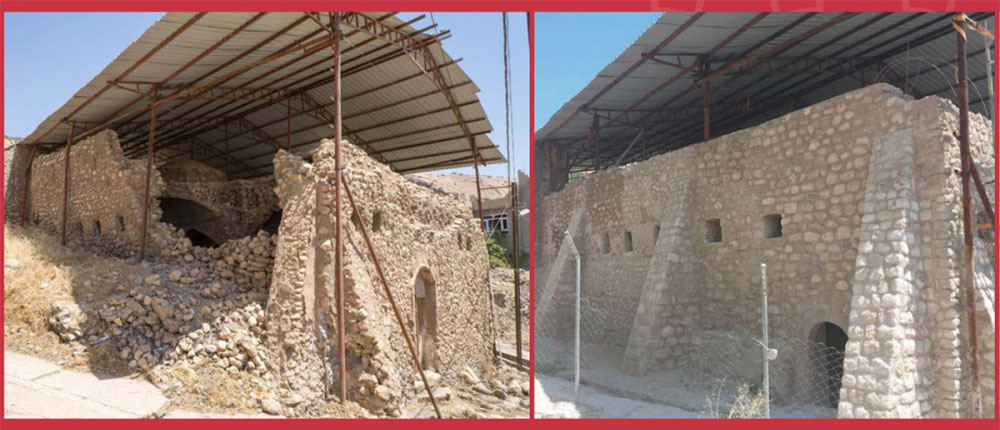
Benard explained that the United States became involved after the U.S. government had allocated funds to repair damage left by the reign of terror, and Nahum’s tomb met the criteria based on its proximity to areas hard-hit by ISIS.
Benard told of the many secrets that the tomb revealed during its restoration. Parts of the ceiling and the arches had collapsed, and in the process of removing the rubble, many artifacts were discovered.
“For example, we found a large pile of Marxist books in a corner. Someone probably feared that the library would be seized from them during one of the dictatorship exchanges that took place in Iraq,” she said. “We also found some original windows that used to be in the dome above the tomb and we were really excited to imagine how the sun's rays would shine through them right onto the tomb and give it a mystical look."
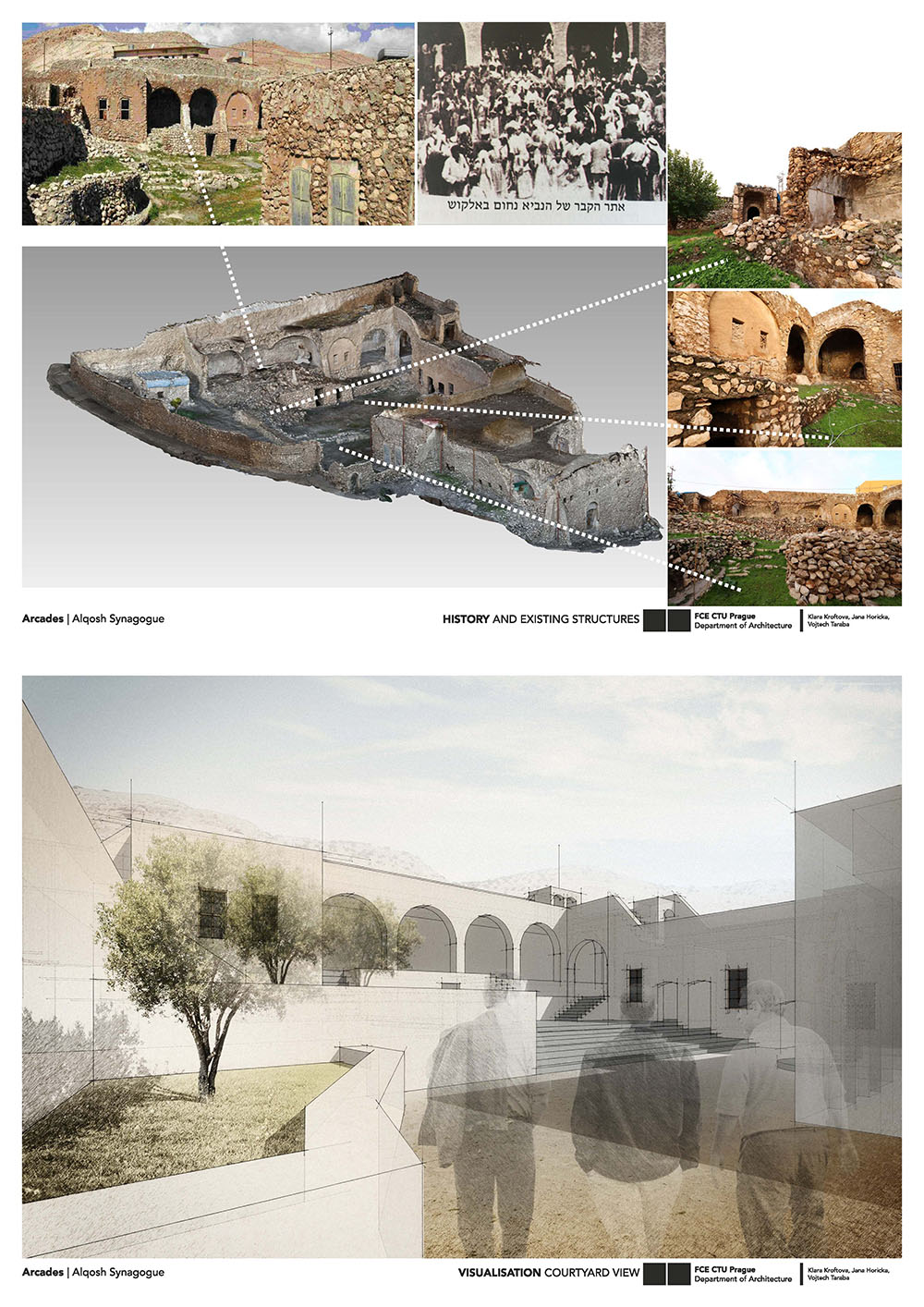
The many candles found in the ruins serve as testimony to the sheer numbers of visitors in pilgrimage to the site. It is a sacred site for all three monotheistic religions.
"This is a great place to visit and think about tolerance and acceptance between different religions,” Benard said. “It is a Jewish site in the heart of a Christian town, next to which is a monastery very sacred to the Assyrians. Very close by there is also a temple to Lalish which is the most important pilgrimage site for Yazidis.”
Chapter 3: The Jews
In preparation for the site’s inauguration, which was delayed due to the outbreak of COVID-19, the advisory council for the preservation and operation of the site is in contact with the heads of the Kurdish government in order to establish procedures for its operation. Dr. Moti Zaken, representing Israeli Jews and winner of the Prime Minister's Prize for the Study of the Judaism of Islamic States, has been the primary Israeli contact to the Prime Minister's office in Kurdistan. Zaken is considered by the Kurdish government to be an authority figure in the history and heritage of the Jews of Kurdistan.
"During the first rescue operation in 2018, Czech engineers from GEMA Art International were able to stabilize the structure, and in April 2019, the U.S administration announced that it would contribute money to its restoration and development," Zaken said. "The [President] of Kurdistan, Nechirvan Barzani, has added another half a million dollars, joined by other Israeli and American donors.”
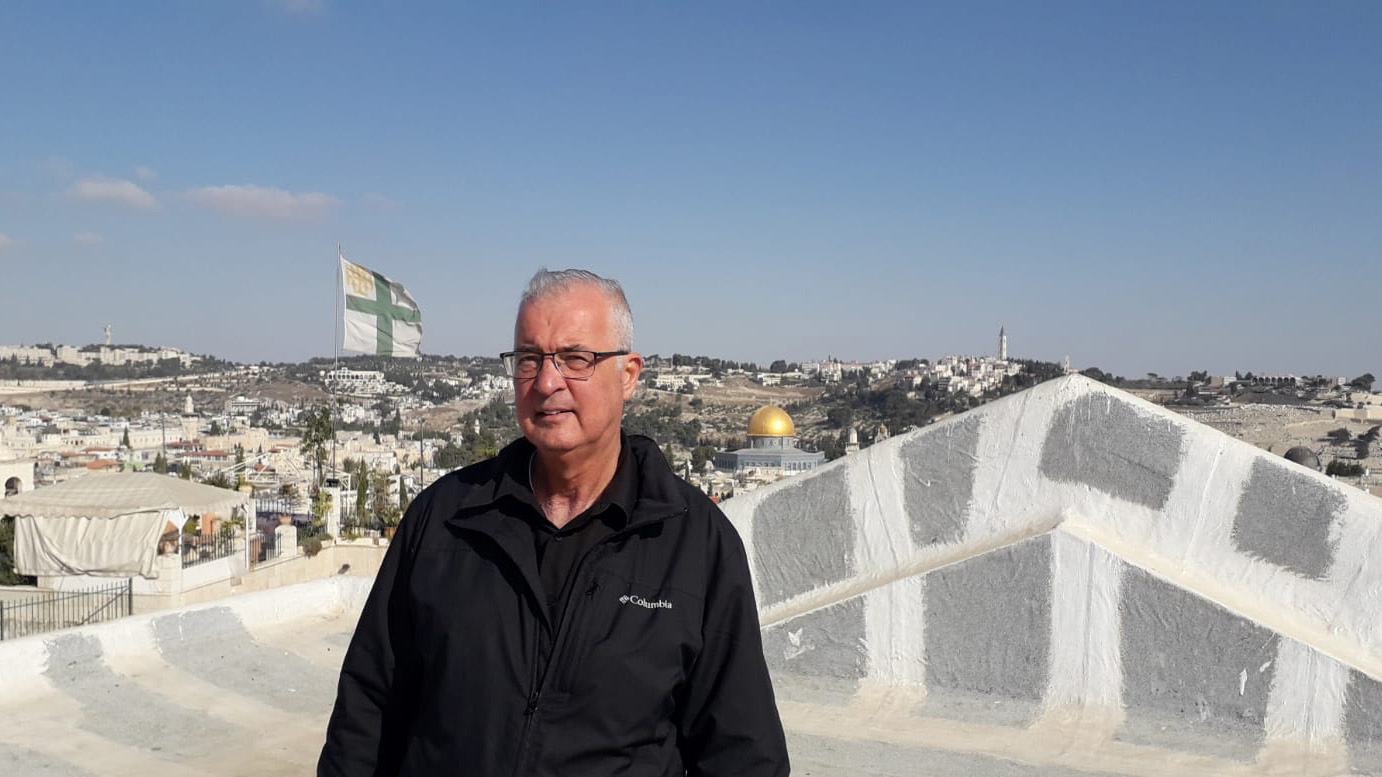
According to Zaken, the synagogue inside the tomb’s complex was built in the 12th century, and Hebrew verses carved on its walls date from the 10th century AD. "This is one of the oldest authentic Jewish heritage sites in the world," he said.
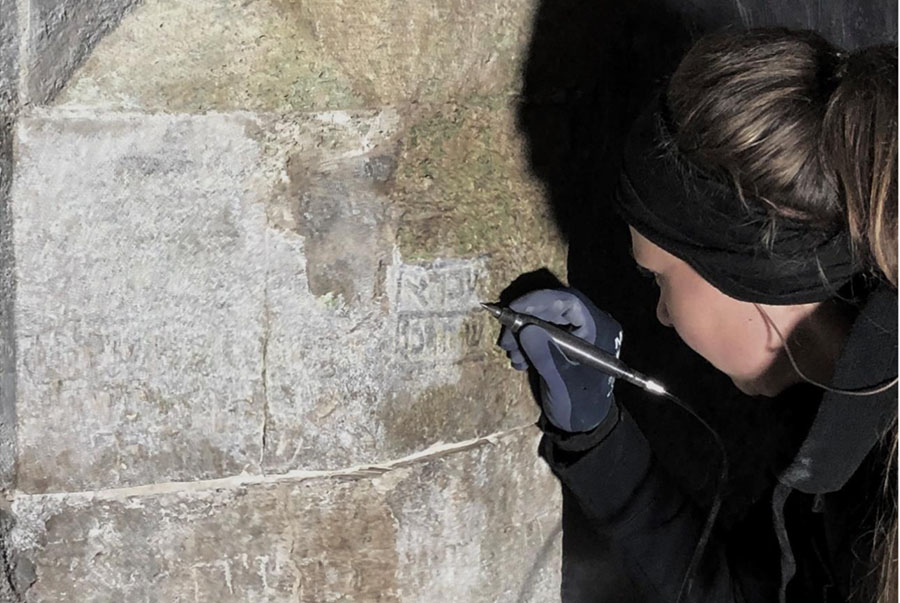
“The holiday Shavuot is known in Aramaic as ‘Is-Ziara.’ On this holiday, the Jews of Kurdistan would make a pilgrimage to the tomb of Nahum in Alqosh,” said Zaken. “For Kurdish Jews, this tomb is the holiest site outside of Zion. The pilgrims would come to the compound for a few days, where they would celebrate and pray in a family and community atmosphere.”
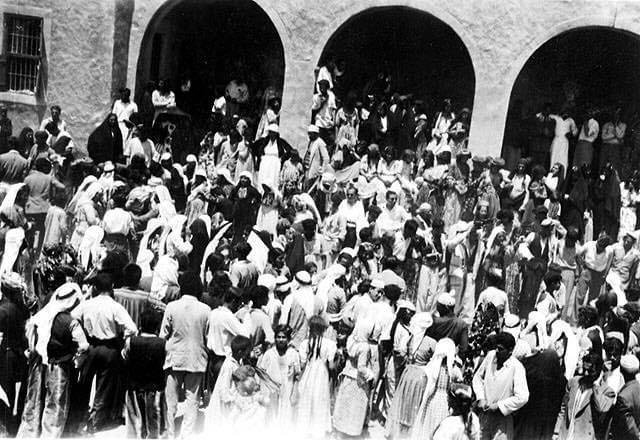
Bar-On elaborated on Zaken’s historical findings, telling of his own joyful childhood memories of the Shavuot holiday at the tomb. "On Shavuot, we would do a procession with an orchestra, drumming and dancing. Every day they would take out dozens of Torah scrolls, that had arrived from all over Iraq and beyond, as well as those kept in the synagogue in Alqosh,” he said.
“We would walk about 3 kilometers to the spring that was in the mountains outside the town, where we would have a picnic and rest, and in the afternoon return with singing and dancing. This is how it was every day for a week. This is how the Jews of Iraq and Kurdistan celebrated."
Bar-On told more of his family’s connection to Alqosh, and how his father came to be the tomb’s caretaker. "Effendi Sasson, who was the head of the Jewish community in Mosul, called my father and assigned him to be 'anaim', who is in charge of the holy tomb, so we packed up our belongings and moved to Alqosh. It was a town of Assyrians and Chaldeans. We were the only Jewish family in town, but we were never alone. The tomb site served as a magnet for all Jewry of northern Iraqi,” he said. “If someone had a serious illness, someone did not find a bridegroom or could not get pregnant, no matter what trouble came – they would come to the prophet Nahum to pray. Back then, unlike today, the travel was hard. Those who arrived always stayed for a few days.”
"We had lived in Barzan," Bar-On continued. "My father was connected to Mustafa Barzani [the leader of the Kurdish rebellion of the 1960s], who loved Jews. When my father immigrated to Israel, they asked him, 'What is your name?' He said: 'Moshe.' They asked: 'Moshe what?' He said: 'Moshe ben Yisrael'. So he was told he needed a last name. We had no last names. So he said, 'Well, let’s impress them with Moshe Barzani. I changed the name Barzani to Bar-On.”
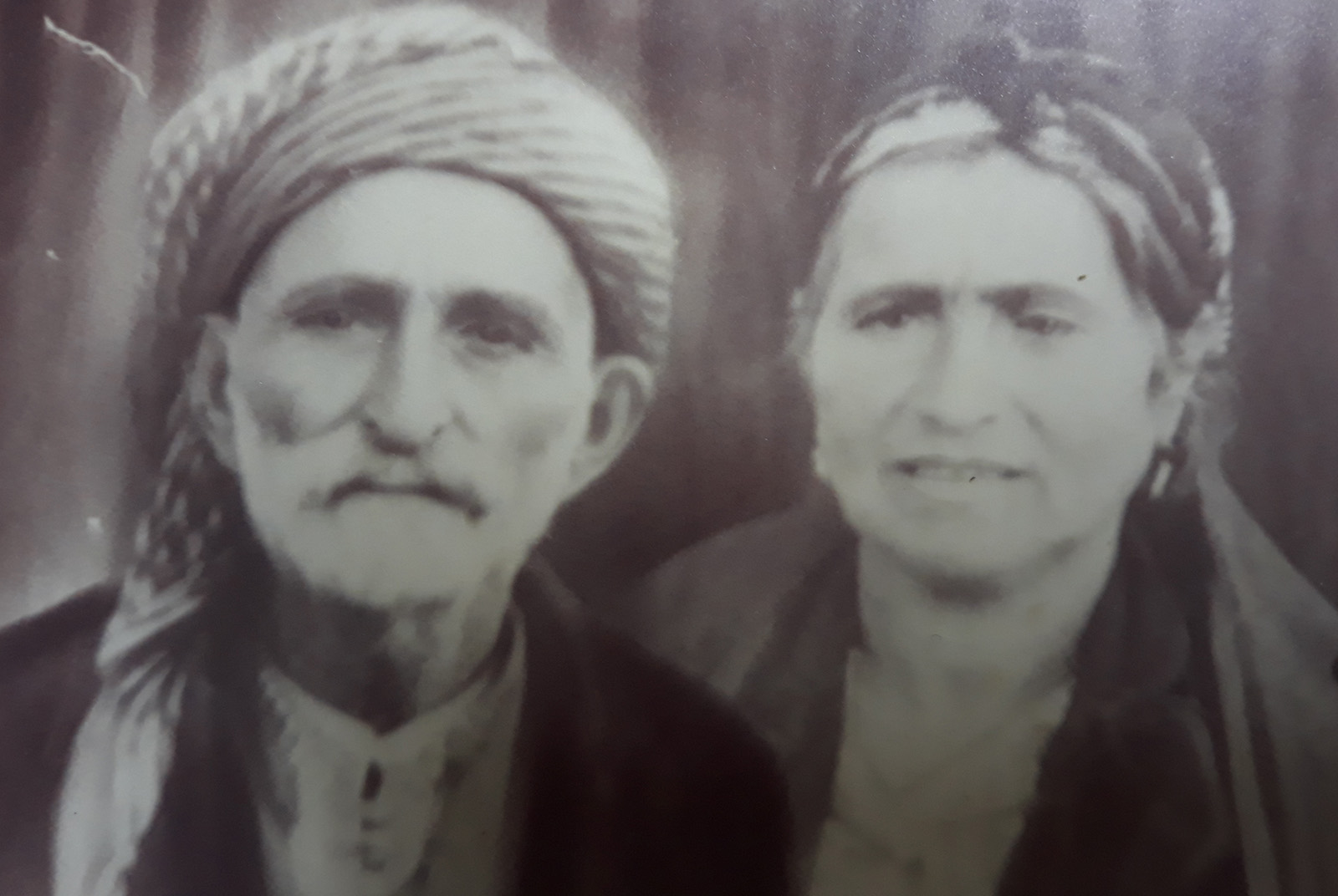
Chapter 4: The Assyrian Church
Despite the centrality of the tomb of Nahum in Iraqi-Kurdish Jewish culture, it is important to remember the importance of the site to the Assyrian Christians as well, says Idan Barir, a research fellow at the Regional Forum on Iraq and Minority Communities in the Middle East.
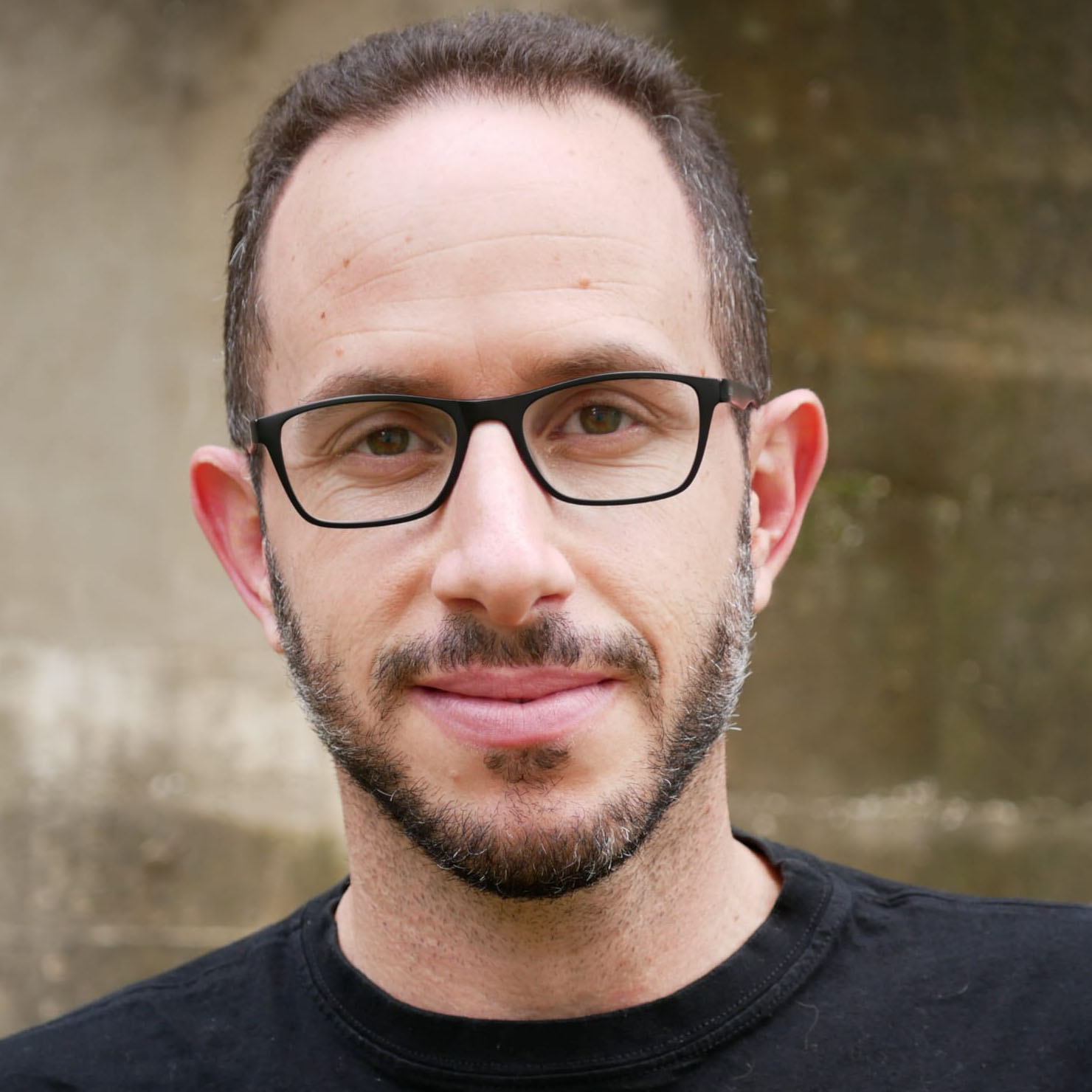
"Their most important religious site, located near the village, is the monastery of Raban Hormizad, hewn into the mountainside about 2.5 kilometers northeast of the village. The monastery once was the most important spiritual and scholarly center of Assyrian Eastern Christianity,” Barir said. “But after the split in the 16th century that led to the secession of the Chaldeans from the church and their adoption of Catholicism, the monastery became a Chaldean and is still considered one of the most important monasteries of the Chaldean Church."
“The prophet Nahum is also holy to us," explained Father Kaju. "We also pray there. The residents of Alqosh are very proud of the tomb complex, it is one of the symbols of the town.” According to him, the authorities of the Kurdish Autonomous Region supported and advocated for the advancement of the project.
"They are very interested in preserving Kurdistan's Jewish heritage. During Saddam Hussein's there was a strong hatred of Jews and Israel, but since it fell, things have changed," Kaju said.
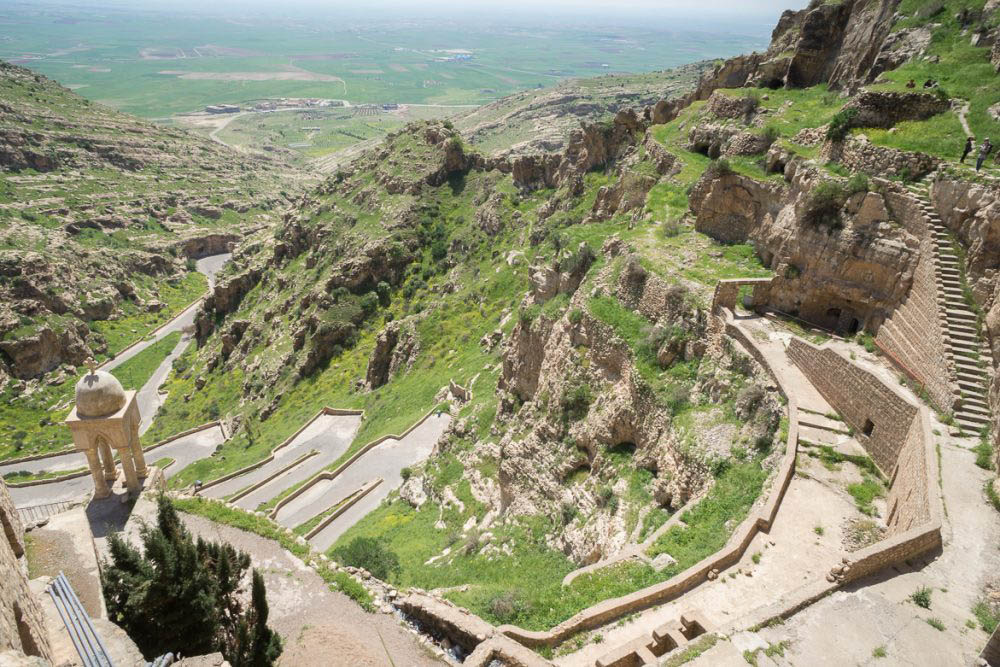
In addition to the multi-faith connection to the tomb, there is a historical controversy concerning the bones of the Prophet.
The French geographer Vital Quint claimed controversially in 1891 that the bones of the Prophet Nahum were transferred in the dead of the night to a Christian church without the Jews noticing, in the year 1883, and that they continue to this day to pray to an empty tomb.
According to him, Nahum's bones were replaced with the bones of a donkey or a lamb, and his original bones were buried in a jar that was placed within a pillar, near the royal gate of the Mar-Micah Church in the town of Alqosh. This pillar bears an engravement in ancient Aramaic reading: "The Place of the Remnants of Nahum,” according to his claim.
"It seems like a farfetched story to me," said Bar-On. "I've never heard of it. The Jews of Iraq are not suckers. Miracles and wonders took place there in the tomb. I'm not buying this story.”
“You must know that I have seen with my own eyes that this tomb is as sacred to the Assyrians as it is to us. They treated my family with admiration. When my father was walking down the street, every person sitting on a chair outside his house would stand up and bow his head to him. It is not possible that Nahum's bones were removed from the grave.”
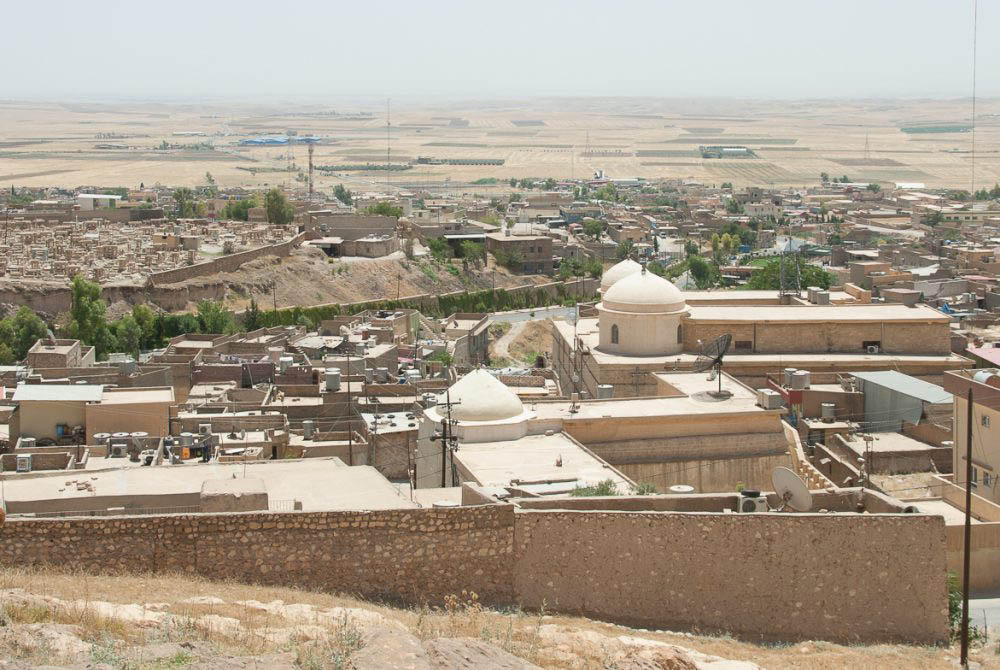
Father Kaju actually confirmed these claims. "Nahum's bones were moved from his tomb outside the city of Alqosh, to a church inside the city. In the church they were hidden inside a pillar. All this was solely to preserve the Prophet,” he said. “So that the remnants would not be abused by rioters who attacked the area.”
Whether Quint was right or not, Father Kaju’s position tells the story of the relationship between Iraqi Kurdish Jews and the Assyrian Christians who lived with them, the importance of the place to both groups, and the fateful partnership of two persecuted groups.
Like their Jewish neighbors, the Assyrians are a group that suffered many persecutions and massacres, most of them during the years of the Ottoman Empire and especially during the First World War.
In recent decades, Christians have emigrated from the Middle East. If in 1985, the number of Christians in Iraq alone stood at about 2.5 million people, today their number is estimated at no more than half a million. Most of the Assyrian community is in the Diaspora – in the United States, Northern Europe and Australia.
"In their countries of origin, especially in Iraq and Syria after the war, the situation of the Assyrians has become difficult and complex. In addition to persecution and attempts at extermination by radical Islamist elements – the last of which was at the hands of ISIS in 2014 – the Assyrians suffer discrimination and repression alongside opportunistic and conditional attempts at reconciliation by regional political authorities,” said Barir.
The Fifth and Final Chapter: “Stop the Tragedy”
As part of the Lobby for Preservation and Cultivation of the Culture and Heritage of Arab Jewry and Islam, which former Knesset member Ksenia Svetlova founded in 2016, she requested UNESCO to "act in every way possible to preserve the Tomb of Nahum and prevent damage to it, as well as hold a discussion on the issue in the Council for the Site Preservation." Dozens of MKs from most Knesset factions joined her in this demand.
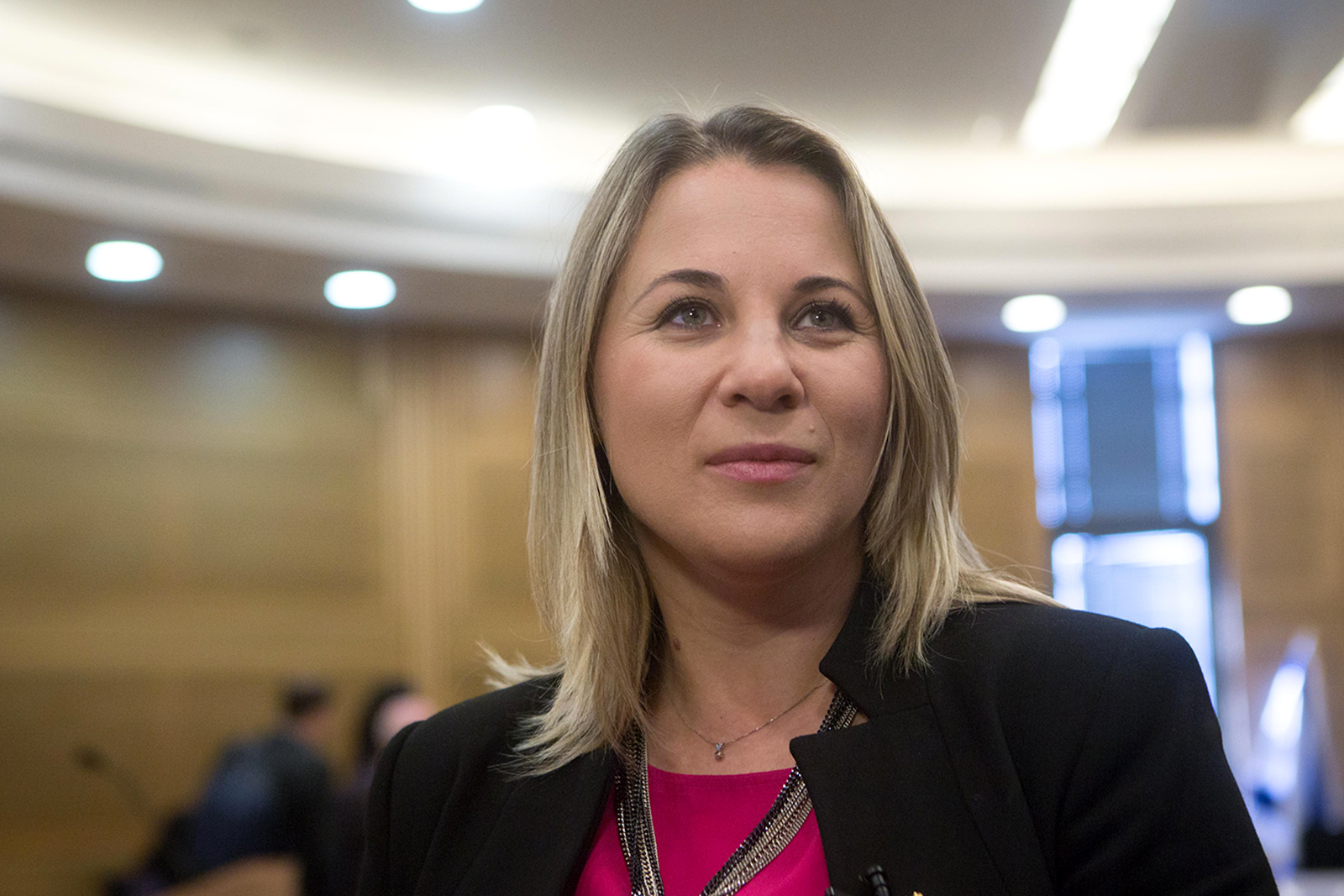
UNESCO did not respond to this demand. However, Svetlova points out that the discussion and publications around this issue created the momentum to allow the renovation initiative to take place.
"There is no other example of restoring such an ancient site, but in the last decade, there has certainly been a change in the Arab world when it comes to Jewish heritage. Suddenly the Arab elites are beginning to realize that the heritage of the Jewish people is also the heritage of Egypt, Iraq, the Gulf states,” she explained. “For example, the ancient synagogue in Alexandria was renovated with an investment of $6 million. It is not as ancient as the tombs of the prophets, but the fact that it has been preserved and renovated speaks for itself.”
"During my many travels in the Middle East, I noticed the sheer amount of Jewish heritage sites," said Svetlova. "In Lebanon, in Syria, in Jordan, in Iraq, in Egypt, in Libya. Synagogues, cemeteries, various sites that are centuries old and some even thousands of years old. It's incredible that almost no one talks about these heritage sites."
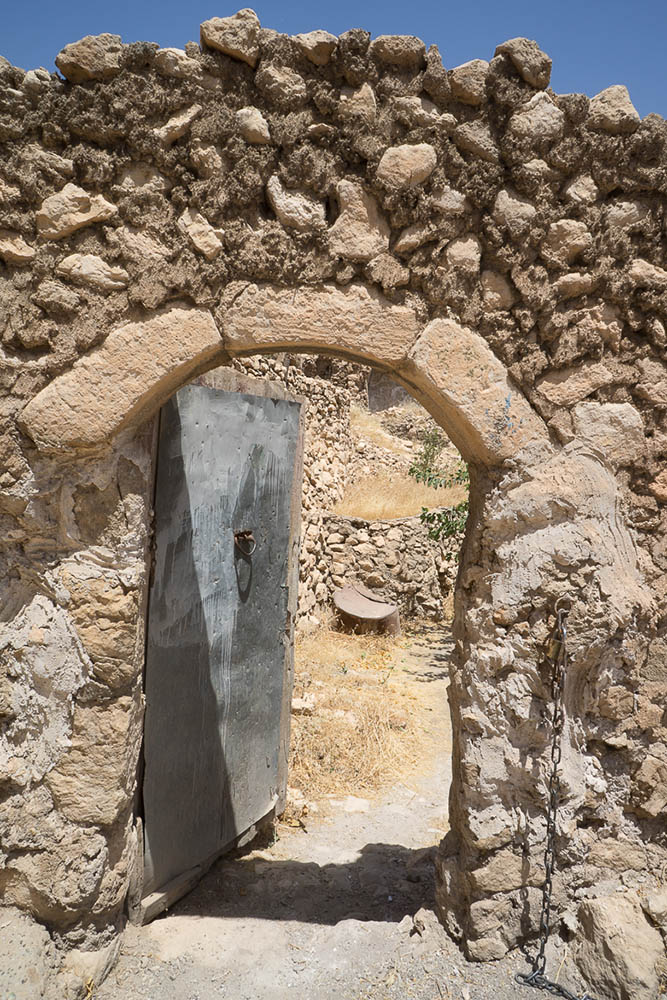
"When I heard about the restoration of the tomb, I didn’t think it would become one of the most beautiful sites in all of Iraq,” said Levi Clancy, an American Jew living in Iraqi Kurdistan. “But the renovators paid special attention to each and every stone, and this place became a source of pride."
"Many are interested in the history of Mesopotamia," Clancy explained. "Those who are interested in the history of the Jews and the Assyrians, come to Alqosh to see the various sites. Unfortunately, nowadays it is almost impossible for Israelis to get here. The Tomb of Nahum is a site of apolitical pilgrimage, which is an argument that should be used to allow Israelis to come here as well.”
"The renovation of Nahum's tomb conveys a powerful message of expression of kindness to the Jewish people, but unfortunately the ethnic cleansing of the Jews of Iraq and Kurdistan has been fully completed and there are no Jews left in Iraq to benefit from the renovation," he continued.
Clancy described his experiences living as a Jew in Iraq today. "It's hard and very sad. I came here from the United States and did not expect to meet a vibrant Jewish community, but in the end, in day-to-day life, it is sad to be the only Jew,” Clancy said. “I believe that in the future, a Jewish community will return to live here. Not necessarily descendants of glorious Iraqi Jewry, but people who want to live alongside the Kurds, Assyrians, Yazidis, Arabs, Turkmenis, Shabakhs and all the peoples that live here together. As I do. I have friends from all these minorities."
The recent declaration of normalization between Israel and the United Arab Emirates raised the possibility that more such declarations would change Israel's status among the countries of the region. Perhaps the day is not so far off when Israeli Jews will be able to travel and visit holy and historical sites in countries that are today defined as enemy countries.
Until that happens, the renovated tomb complex is expected to be the only center for the study of Jewish heritage in the Middle East outside of Israel. But according to Svetlova, the Israeli government has done little towards its establishment.
"I expect the state to take responsibility for the heritage sites of the Jewish people. It is unfortunate that Jewish heritage sites in Iraq are solely the business of the Jews of Iraq and Kurdistan,” she said. “Why isn’t this story becoming a national debate? If the government acts, then maybe in the future, Jews will return to visit such sites in the countries of the region."
In Svetlova’s opinion, the government should generate public awareness of the site, and act in partnership through allied countries like the U.S, the U.K, Italy or France.
“If we do not act today, we may lose the heritage of many generations of the Jewish people. These sites preserve the memories of Jews who have lived in Mesopotamia for thousands of years,” she said. “We must understand that these sites will not stand there forever. They will continue to be destroyed and it is not enough to write about it in the newspaper. If the policymakers do not start working to save the sites, it will be a tragedy.”






